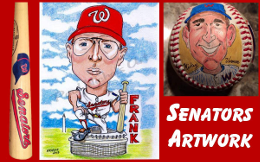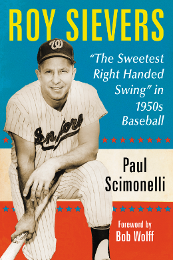After the 2012 joyride, this season, flush with foolish proclamations like Davey Johnson’s “World Series or bust” comment and media publications, notorious for their poor accuracy, proclaiming the Nationals the likely World Series winner, the 2013 baseball season in Washington has felt like one long disappointment.
However, to the close observer, the seeds of an underachieving season were sewn well before Opening Day:
— the trade for Denard Span forced Bryce Harper into a new outfield position and altered the chemistry and reduced the power of a line-up that came into its own last season with Jayson Werth in the leadoff position. (The trade also cost Washington a promising young pitcher).
— Danny Espinosa’s refusal to get surgery to repair a torn left rotator cuff and the team’s decision to play him regularly anyway saddled the team with a compromised ballplayer performing far below even replacement-level player quality. The Nationals should have learned from Adam LaRoche’s poor decision to try to play with a torn labrum in 2011. His and Espinosa’s statistics playing while injured are eerily similar.
LaRoche’s batting average, on-base percentage, slugging percentage, OPS slash line: (.172/.288/.258/.546)
Espinosa: .158/.193/.272/.465
— The decision to sign a new closer, Rafael Soriano, disrupted the roles of the incumbent bullpen members, causing an adjustment that took more than 70 games to settle.
— Ryan Zimmerman’s offseason shoulder surgery, while necessary, left him a compromised player – with less range, more throwing woe, and far less hitting power.
— The excruciating, inexcusable way the team kicked away Game 5 of the NLDS left understandable psychological scars, leaving a skittish, nervous team who failed in nearly every pressure situation the season’s first two months.
While all these factors argued against the Nationals being able to repeat their best-in-baseball 98 win performance of 2012, it still left a team capable of wins in the low 90s and competing for a spot in the post-season. Unfortunately, more trauma hit in this Murphy’s Law season:
— Dan Haren, his recent uptick aside, proved to be a disastrous #5 pitcher, performing at levels worse than a decent AAA player plucked from any roster in the majors.
— Injuries to Ross Detwiler and Stephen Strasburg, with no John Lannan available in Syracuse, forced the Nationals to rush not-quite-ready AA pitchers to the mound. Taylor Jordan looks passable, but he is in far over his head this season.
— Lengthy injuries to Bryce Harper (courtesy of a wall in Los Angeles and a dunderheaded decision to rush back to the field) and Wilson Ramos removed two of the team’s best hitters from the line-up, forcing bench players into action who failed as spectacularly in 2013 as they succeeded the year before.
— Nagging injuries to Jayson Werth left him off the field often enough to add to the dreadful offensive performance of the Nationals.
— Horrendous defense and baserunning have resulted in numerous big innings against the Nationals and squandered chances on the rare occasions they did rally. Twice in the past three weeks, the team has had runners on 2nd and 3rd or the bases loaded and nobody out and failed to score in tied or 1-run games that eventually ended in gut-wrenching losses.
So, now that the Nationals are back at the .500 level one game before the All-Star break (remember the years when fans would have celebrated such performance) and the trading deadline 17 days away, what should the Nationals do?
Should they buy or sell?
My opinion: It’s a no-brainer — sell?
The 2013 Nationals are too flawed to compete for the post-season. Their rotation is too thin, their hitting too weak, their bench too limited. To trade away prospects now would risk compromising what looks to be a very bright future for this franchise in what will prove to be a vain, pathetic reach for the post-season that will ultimately fail.
The farm needs more almost-ready major league quality players, not less. Now is the time to get them.
My suggestions:
— trade Span to a contending team in need of speed and defense in the outfield (St. Louis comes to mind, as does Texas). He has an affordable contract with two years left on it, so he could fetch some value.
— trade LaRoche to a team in need of left-handed power and defense (Texas is a clear need, Boston may want him as a Doug Mientkiewitcz clone)
— trade Soriano to a team in need of a closer (Boston again comes to mind and the Yankees may want him back as a set-up man).
— if anyone will take him, trade Haren. If not, just let him play out his one-year deal and show him the door.
These players might not fetch much in trades, but, depending on needs and injuries, they will yield some value, free up space for younger players to learn their craft, and provide more cash to spend on less splashy, more sensible free agents next year such as Michael Morse (for the record, I think the Morse trade was fine and a huge win for the Nationals on the strength of Ian Krol alone).
With these trades, the Nationals can put younger players back into familiar roles such as Storen and Clippard sharing closing duties and to move Bryce Harper back to centerfield. It does create holes in left field and at first base, but the Nationals have in-house possibilities for 2014 (teach Zach Walters how to play the outfield, Matt Skole at first base) as well as an always ample free agent market.
With youngsters like Robbie Ray, Nathan Karns, Jordan, Christian Garcia, and others on the way, pitching looks to be in good shape. Hitters such as Brian Goodwin and Jason Martinson are coming soon from Harrisburg as well. Baseball is a young man’s game, so start clearing the way for the youngsters now.
From the day they purchased the team, the Lerner family proclaimed they wanted a team that could win year-in and year-out, not just one season of glory followed by years of losing (see – Florida Marlins). They veered from that philosophy this season by trading a prime prospect for a guy who looks more like Nook Logan every day and by spending $40 million for free agents past their primes (Haren, Soriano, LaRoche).
It is time to get back to the core philosophy of building a sustainable winner. Write 2013 off now as a disappointment. Get younger, hungrier (and, I might add, a lot more humble) and more talented in 2014. Start planning for that day now.
Fine prospects are coming soon. More can be had by selling off limited, but useful veterans to teams desperate to make a one-year grab for glory.
—
Stephen J. Walker
Author: A Whole New Ballgame: The 1969 Washington Senators
Publisher: Pocol Press
www.pocolpress.com
Steve@StephenJWalker.com






